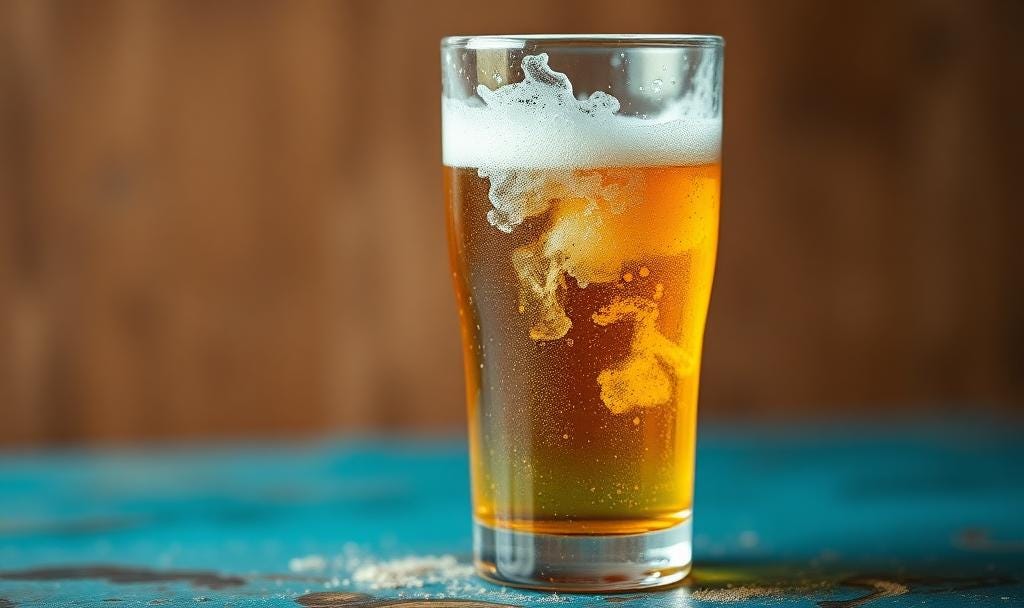👃When Beer goes bad: understanding the dodgy pint you've just been served
Five of the most common off flavours in beers, what they taste like and why they happen.
Sometimes you take a sip and get a whiff of buttered popcorn, cooked corn, or even a faint note of wet cardboard. You might not dare to say something because it’s your best friends first brewing experience but you should at least be honest with yourself: That’s not creativity, it’s an off flavor.
Whether you’re a beer lover, homebrewer, or just curious, understanding off flavors can help you taste beer more critically and appreciate quality even more. Let’s dive into what off flavors are and five of the most common ones to watch (or sniff) out for.
What Are Off Flavors?
Off flavors are undesirable tastes or aromas in beer that indicate something went wrong during brewing, fermentation, packaging, or storage. Some are barely noticeable; others are unmistakable.
They’re not always “bad” in small amounts or in the right style but in the wrong context, they signal a flaw.
5 of the Most Common Off Flavors
1. 🧈Diacetyl – Buttery or Butterscotch
What it smells/tastes like: Buttered popcorn, toffee, or slick mouthfeel
What causes it: Incomplete fermentation, unhealthy yeast or dirty beer lines in the pub.
Where it might belong: Some English ales, in small amounts, Czech lagers
Where it’s a flaw: Most lagers, IPAs, and clean styles
Tip: If your beer tastes like movie theater butter, it’s likely diacetyl.
2.🌽 DMS (Dimethyl Sulfide) – Cooked Corn or Cabbage
What it smells/tastes like: Creamed corn, stewed vegetables
What causes it: Inadequate boil or slow cooling—common in lagers
When it’s OK: Very light lagers may have trace amounts most common in Munich Helles.
When it’s not: Most other beers
Tip: Strong DMS is often the result of rushing the brew process.
3.🍏 Acetaldehyde – Green Apple or Pumpkin
What it smells/tastes like: Green apple skin, raw pumpkin
What causes it: Fermentation cut short or early oxidation
When it’s acceptable: Never, unless the beer is still conditioning
When it’s not: In finished beer
Tip: Give homebrew a few extra days to clean this up naturally.
4. 📦Oxidation – Stale or Cardboard-Like
What it smells/tastes like: Wet paper, old bread, or sherry (in aged strong beers)
What causes it: Oxygen exposure after fermentation
Where it’s expected: In aged barleywines or vintage beers
Where it’s a flaw: IPAs, lagers, fresh styles.
Tip: Always store beer cold and sealed to prevent this flavor. Very common in mechanical cap beers.
5. 🦨 Lightstruck – Skunky
What it smells like: A literal skunk
What causes it: UV light reacting with hops, especially in clear or green bottles
Common in: Beers in the wrong kind of glass
Rare in: Canned beers or those in brown bottles
Tip: If your beer smells like it got hit by a skunk, blame the sunlight and not the brewer.
Controversial note: The "lightstruck" character once considered a clear flaw is gaining acceptance in some circles. Beers packaged in clear glass or green bottles (like Corona or Heineken) or drinking out of a glass on a terrace often develop a skunky aroma due to light exposure. Interestingly, for many drinkers, this aroma is now nostalgic associated with drinking in the summer, beaches and holidays rather than perceived as a fault.
Final Sip
Off flavors don’t just ruin a beer they teach you something. Each one is a clue about what went wrong and how brewing (or storage) could be improved.
So next time you taste something strange, don’t just pour it out or automatically blame the brewery: pause and decode it. Your palate will thank you.
🍻 Have a weird beer story or flavor you’re unsure about? Hit reply or leave a comment—I’d love to help you break it down.





